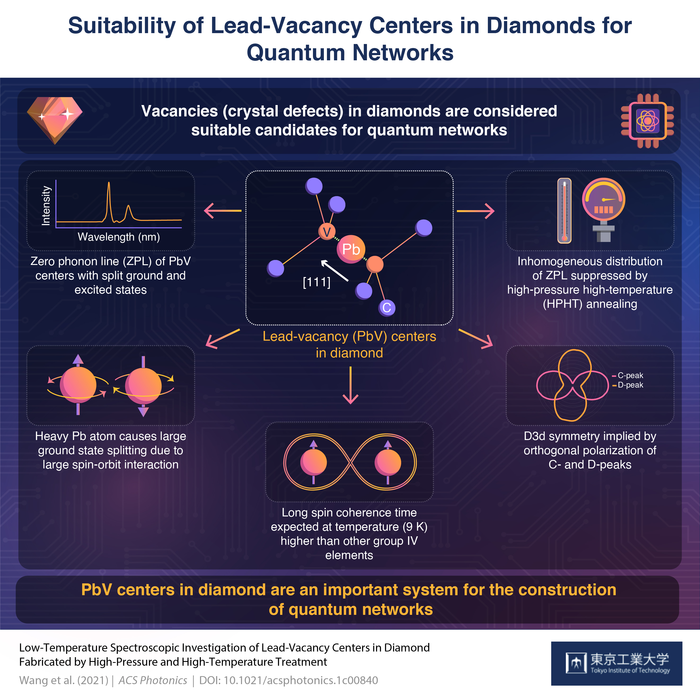A missing carbon atom in the crystal lattice creates a so-called defect or “vacancy,” which is where the color in a diamond arises.

Image Credit: Tokyo Institute of Technology.
Electronics researchers have shown great interest in vacancies for a long time as they can be utilized as “quantum nodes” or points that form a quantum network for data transmission.
One of the approaches that have been used to initiate a defect into a diamond is by implanting it with other elements, like tin, silicon or nitrogen. In a new study, researchers from Japan have illustrated that lead-vacancy centers present in diamonds possess the right properties to operate as quantum nodes.
The study has been published in the ACS Photonics journal.
The use of a heavy group IV atom like lead is a simple strategy to realize superior spin properties at increased temperatures, but previous studies have not been consistent in determining the optical properties of lead-vacancy centers accurately.
Takayuki Iwasaki, Study Lead Author and Associate Professor, Tokyo Institute of Technology
Researchers look for three vital properties in a potential quantum node. They are spin coherence time, symmetry and zero phonon lines (ZPLs), or electronic transition lines that do not impact “phonons,” known as the quanta of crystal lattice vibrations.
Symmetry offers a better understanding of the process of controlling spin (rotational velocity of subatomic particles like electrons), coherence refers to similarity in the wave nature of two particles, and ZPLs explain the crystal’s optical quality.
The lead vacancies present in diamonds were fabricated by the scientists and then the crystal was subjected to high temperature and pressure. Furthermore, they studied the lead vacancies with the help of photoluminescence spectroscopy. It is a method that enables one to read the optical properties and evaluate the spin properties.
The researchers discovered that a kind of dihedral symmetry was possessed by the lead-vacancies, which was considered to be suitable for the fabrication of quantum networks. Also, they found that the system revealed a large so-called “ground state splitting,” a property that adds up to the system’s coherence.
Eventually, they noted that the high-pressure high-temperature treatment inflicted by them upon the crystals suppressed the inhomogeneous distribution of ZPLs by retrieving the damage caused to the crystal lattice during the implantation process.
An easy calculation disclosed that the lead-vacancies had a long spin coherence time at a higher temperature (9 K) compared to previous systems with tin and silicon vacancies.
The simulation we presented in our study seems to suggest that the lead-vacancy center will likely be an essential system for creating a quantum light-matter interface — one of the key elements in the application of quantum networks.
Takayuki Iwasaki, Study Lead Author and Associate Professor, Tokyo Institute of Technology
This study sets the stage for the future development of thin (defective) diamond films and big (defective) diamond wafers exhibiting reliable properties for applications of a quantum network.
Journal Reference:
Wang, P., et al. (2021) Low-Temperature Spectroscopic Investigation of Lead-Vacancy Centers in Diamond Fabricated by High-Pressure and High-Temperature Treatment. ACS Photonics. doi.org/10.1021/acsphotonics.1c00840.